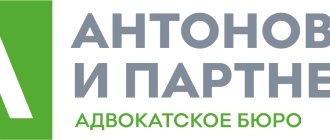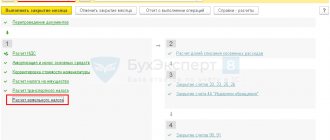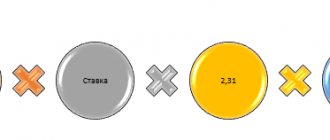Indirect taxes: what are they?
Indirect taxes are considered to be taxes that are formally collected by the state from entrepreneurs, but are actually paid by third parties (most often clients of companies, consumers of goods and services). These fees include VAT, excise taxes, and various customs duties.
As a rule, indirect taxes are included in the selling price of a particular product or service. The seller or the subject of the service, having received from the consumer or buyer a monetary transaction for a product or service, including VAT or another type of fee, transfers it to the state in the prescribed manner.
Indirect taxes: who pays, their properties and types
Another form of taxes, unlike direct taxes, relates to the sale of goods, services, and works. Its source is located within another payment that the consumer will make. The entrepreneur includes a certain markup in the price, which includes, in addition to the cost and profit share, also a part for paying tax.
Thus, an indirect tax is a payment levied on the sale of goods, services or work, included in the form of one or another surcharge included in the price or tariff.
The payer of the tax is considered to be the owner of the enterprise - the manufacturer or organizer of the provision of services, but the tax will be generated from the funds of consumers, that is, in fact, the payer is the buyer of the product or service. In the case of indirect tax, the entrepreneur himself acts as a tax agent (collector).
NOTE! There are options where the indirect tax is not passed on to the consumer. For example, a buyer included VAT in the price of a product, but this price caused a decrease in demand and had to be reduced. In this case, the indirect tax will be paid partly from the entrepreneur’s profit, thereby becoming direct to some extent.
Properties of indirect taxes
Indirect taxes have the following features:
- full or partial inclusion - the surcharge can include both the entire tax and a certain part of it;
- responsibility of the entrepreneur - in fact, the entrepreneur is an intermediary between the state and the actual payer of the tax, but it is he who will be asked for late or incomplete payment of the tax;
- closedness - the consumer does not know exactly what amount of the price of a product or service he pays to the state;
- consistency - it is impossible not to pay such a tax, since the consumer automatically provides funds for it by paying for a product or service;
- unevenness - such taxes are distributed unevenly; they are introduced mostly on goods and services for which there is increased demand.
Types of indirect taxes
- Individual taxes (they are also called excise taxes) are established on goods of high demand so that the state can receive a percentage of the excess profits of distributors or manufacturers into its budget. They also apply to goods, the excessive consumption of which can cause harm to health, in order to limit their sale, for example, alcohol and tobacco products. They also apply to some luxury goods. The personal tax is a percentage of the price at which a product is sold.
- Universal taxes – are accrued based on the markup that is established on the product (service) at different stages of its production and sale. All goods are taxed, except for separately specified socially significant groups. An example is value added tax.
Not subject to VAT:- certain medical products and services;
leasing premises to foreigners;
- services for the education of preschool children;
- archive services;
- catering in medical and educational institutions;
- passenger transportation within a city or other territorial unit;
- funeral services;
- some other types of services listed in paragraphs 9-30 of Article 149 of the Tax Code of the Russian Federation.
- Fiscal monopoly is a fee paid by an individual or organization for certain legal actions of government bodies (the provision of services provided for by law). Examples include fees for licenses, permits, registrations, paperwork, and sales taxes.
The combination of direct and indirect taxes makes up the taxation system of the Russian Federation.
What is a “direct tax”?
A direct tax, in turn, is one that an entrepreneur pays directly to the treasury himself. What examples can you give? Among the most common direct fees is income tax (as well as its analogues under the simplified tax system, UTII and other similar regimes).
Of course, de facto, fees of this type are usually included by entrepreneurs in the same selling price of goods and the cost of services. As well as many other indirect costs. Direct taxes, however, can be paid in an “optimized” way. The same cannot be said about indirect fees. It may well turn out that the company will have real reasons not to pay direct tax (for example, if de jure expenses exceed income).
In turn, VAT, duties and excise taxes end up in the treasury in absolutely any case. We can say, regardless of the direct “expression of the will” of the entrepreneur, depending on the objective presence or absence of expenses. And therefore, according to some experts, VAT and similar fees are indirect taxes. They can be said to exist outside the control of the entrepreneur.
Customs procedure
The procedure for paying indirect taxes on import transactions is influenced by the customs procedure under which the imported valuables are placed. Depending on this procedure, VAT will need to be paid in full, in a limited amount, or not at all.
The customs procedure is influenced by the purposes of the release of goods and materials in the Russian Federation by the customs authority:
| Customs procedure | Features of tax payment |
| Transit, processing, storage or destruction at customs, re-export, free customs zone or warehouse, duty-free trade, movement of supplies and their declaration, refusal in favor of the state. | Not paid |
| Temporary import, import of processed products when they are placed outside the customs territory | Not paid or paid in a limited amount |
| Import or processing of valuables for consumption in the Russian Federation | Paid in full |
VAT
Indirect taxes include, as we said above, VAT. What kind of collection is this? What is its nature? Value added tax, according to the generally accepted interpretation among Russian economists, is an amount subject to withdrawal in favor of the state treasury, included in the selling price of goods or services. Added value is what brings revenue and profit to a business. The state taxes it accordingly, and this is the norm for most countries in the world.
VAT plays a huge role in terms of the formation of the state treasury. The same goes for other indirect taxes. But it is VAT that gives the Russian budget about 40% of revenues (in the federal part, in the consolidated part - about 20%). As such, direct taxes, if you look at the reports of the Ministry of Finance, bring several times less revenue to the treasury. Many experts are confident that indirect taxes are a strategically important component of the national economy.
The main criterion for VAT is that it is paid by every business entity that creates added value. That is, relatively speaking, individual entrepreneur A.B. Petrov, who owns a wholesale warehouse, buys pillowcases from individual entrepreneur V.G. Ivanov, who owns a weaving factory. At this stage, the state will collect VAT from the manufacturer, that is, from Ivanov’s individual entrepreneur. In turn, IP Sidorov D.E., who owns a retail store, buys pillowcases from the warehouse of IP Petrov. At this stage, the state will take VAT from Petrov’s individual entrepreneur. Finally, IP Sidorov sells pillowcases to residents of his city at retail price. At this, in turn, stage, the state will impose VAT on Sidorov’s company.
At each stage of the pillowcase “movement,” some business generates added value. The factory - the one that will compensate for the costs of production and will provide some profit, the wholesaler - the one that will provide profitability to the business through the resale of the pillowcase. The retailer is the one that can compensate for the purchase price and, in turn, provide a profit to the store. At each stage, the state assesses an indirect tax on the goods, paid by each entrepreneur.
general characteristics
The key grouping of tax obligations implies the division of all budget payments into two large groups: direct and indirect taxes, a list of which is given below. Let's understand the key concepts.
Thus, direct liabilities should include all payments that are levied directly from the taxpayer’s property assets or from the income he receives. In other words, the taxpayer independently calculates and pays tranches to the budget. Moreover, transfers are made at the expense of the property owner’s own funds or income. Examples of such non-commercial organizations can be: personal income tax, non-commercial tax liability, obligations for property, transport, land plots and other assets.
Indirect taxes include a liability that is not calculated directly against the tax base, but is included in the cost of goods, work, or services sold or purchased. In simple words, the seller, when determining the final selling price of the goods, lays down a certain tax liability tariff. Consequently, indirect taxes are levied on the buyer when making payments for the purchased goods. It is the buyer who pays the additional tariff included in the price. After which this tariff, paid by the buyer, is transferred by the seller of goods to the budget.
In other words, the key difference is the nature of the withdrawal. That is, direct fees are applied specifically to the property or income-generating assets of the taxpayer. And indirect ones are calculated as a certain allowance. In most cases, the premium is set on the cost of the assets or services being sold. However, fixed payments can also be classified as CN, which are determined regardless of the tax base.
VAT: payers, tax amount
In accordance with Russian laws, all business entities are required to pay VAT: individual entrepreneurs, business entities. The main rates according to which indirect taxes are paid within the framework of VAT are as follows.
1. Goods exported are not subject to VAT (with the exception of certain types of raw materials).
2. Products related to food, as well as those whose final consumers are children, are subject to an indirect tax of the specified type at a rate of 10%.
3. Printed press, medicines (and other medical products specified in the list in Chapter 21 of the Tax Code of the Russian Federation) - also 10%.
4. All other goods (services, works) are subject to VAT at a rate of 18%.
The frequency of VAT payment to the treasury depends on the volume of revenue (and this is regulated by relevant legislation). In some cases, an entrepreneur must transfer this tax once a month, in others it is enough to do this quarterly (with the same frequency, a VAT declaration is submitted to the Federal Tax Service).
Deadlines for payment of indirect taxes (VAT)
The specific dates for the transfer depend on the customs procedure under which the imported valuables are placed. If goods are imported for consumption within the Russian market, then the obligation to pay arises before the release of valuables from the customs territory.
If the release of imported goods was carried out before the filing of the customs declaration (this is possible in some cases under Article 197 of the Customs Code), then the additional tax must be transferred within 10 days, which are counted from the beginning of the month following the month of release.
When temporarily importing goods, the added tax must be transferred before release according to the specified procedure, together with import duties and taxes for the period of temporary import.
The tax paid can be deducted on the basis of a customs declaration if the goods are used in operations subject to additional tax, otherwise it will have to be taken into account in the cost of imported valuables. VAT defaulters are also required to pay tax on imported goods, but it cannot be deducted.
Excess transferred funds for added tax can be offset in the form of payment of customs duties, penalties and interest.
Who doesn't have to pay VAT?
There are, of course, types of businesses where they do not pay indirect taxes as part of the calculated VAT. These are, first of all, any exporting companies. These are companies providing passenger transportation services. Such entities include companies providing services in the housing and communal services sector. These are firms that provide some types of financial services. Companies selling their own products (mainly in the catering category) do not have to pay VAT. This type of tax is not required to be transferred to the treasury by educational, research, development, scientific organizations (receiving funding from the state budget), cultural institutions, and medical organizations.
The peculiarity of the application of VAT in Russia is that the list of types of goods (services, works) exempt from payment of this type of tax is approved at the federal level. Regions and municipalities cannot apply their own rules regarding this area.
Import from customs union countries
When importing goods from the countries of the customs union (Kazakhstan and Belarus, and from May 29, 2014, Armenia and Kyrgyzstan), the buyer of imported goods must pay indirect taxes to the local tax office, where he is registered. This obligation exists both for payers of the types of taxes under consideration, and for persons exempt from this due to the application of special regimes or the provisions of Article 145 of the Tax Code of the Russian Federation.
To calculate the additional tax, one of the rates determined by paragraphs 2 and 3 of Article 164 should be applied. Tax Code of the Russian Federation. It is also necessary to take into account the provisions of paragraph 17 of the Protocol accompanying the Treaty on the EAEU as the 18th Annex.
VAT must be calculated on the day the valuables are accepted for accounting from the cost to be transferred to the supplier for the purchased valuables according to the attached documentation. Amounts from documents indicated in foreign currency must be converted into rubles at the Central Bank exchange rate on the day of receipt of goods.
The deadline for transferring the added tax is until the 20th day inclusive of the month following the month of receipt of imported goods. Along with the payment, you must provide a package of documents, which includes:
- Tax return;
- Application for payment of indirect taxes;
- Bank statement confirming payment of taxes;
- Invoices;
- Transport documentation;
- Agreement concluded with the supplier;
- Other documents from clause 20 of Appendix No. 18 to the Treaty on the EAEU.
Payers can send the listed added tax for reimbursement; all other persons are obliged to write it off as expenses or include it in the cost of imported valuables.
The documentary basis for acceptance for deduction is an invoice, payment documentation for the transfer of tax, an application, therefore such VAT can be reimbursed only after submitting this documentation to the tax office.
Excise taxes
What other types of indirect taxes are important for the state? These include excise taxes. These are taxes that are necessarily included in the cost of goods determined by a special list. Just as it happens with VAT, the actual payer of excise taxes is the buyer of the goods. The main feature of this type of indirect taxes is that it is typical only for the production sector. In some cases, excise taxes may also be applied to trade activities (for example, in cases where excisable goods are imported into Russia for the purpose of subsequent sale at a premium).
Customs duties
Let's consider another type of indirect taxes - customs duties. These types of fees are collected by specialized government agencies at the country’s border. The basis for calculating customs duties is the movement of various goods from one state to another. The rates for such fees always depend on the specific type of product, the country that produced it, and other conditions characterizing the economic policy of the authorities (or interstate political structures - such as, for example, the Customs Union).
For what purpose do countries impose customs duties? Experts structure the goals of this type of fee as follows:
- more rational distribution of import volumes of specific groups of goods;
- maintaining a balance between exports and imports in certain production areas;
- regulation of foreign exchange earnings of a business (and corresponding expenses in foreign currency);
- creating an environment for the development of domestic production;
- stimulating the consumption of goods produced in a particular country (or by domestic factories);
- protection of the state economy from global market factors.
Customs duties are classified as follows. There are so-called “ad valorem” fees. They are charged as a percentage of the cost of goods (which is determined by customs structures). There are “specific” duties. Their calculation is carried out on the basis of commodity units. There are also “combined” customs duties (combining the features of the two previous types). Seasonality can be used as an additional criterion for classifying fees. That is, duties can, for example, work in the summer and be canceled in the winter.
The purposes of customs duties can be anti-dumping or compensatory (both types are designed to protect the national producer). Fees of the first type are introduced if an exporting company imports goods into Russia at a price lower than when sold on the national market, as a result of which the domestic manufacturer experiences discomfort. Countervailing duties are designed to counteract the activity of businesses that produced their goods with the help of subsidies (that is, they had a obviously more advantageous position in comparison with other producers).
Another criterion for the classification of duties is the direction of movement of goods relative to the state border. There are, therefore, import (or entry) fees. This is the most popular type of duties (both in Russia and in the world). A less common, but important from the point of view of the formation of the state economic strategy, type of fees is export. In Russia, it is used, in particular, when exporting oil and some other types of raw materials.
Import duties used within the Customs Union are unified. They are regulated through Uniform Tariffs. This was done with the aim of integrating the economies of the states that are part of the Customs Union.
Indirect taxes in the vehicle
As you know, the Russian economy is closely integrated with the Kazakh and Belarusian ones. Many rules are being unified, including those regulating indirect taxes. The Customs Union, an international economic structure formed by Russia, Belarus and Kazakhstan, requires the standardization of many business processes.
Having studied the rules governing the collection of indirect taxes in the Customs Union, we can also get an idea of how work with this kind of fees is regulated in each of these countries separately, including in the Russian Federation.
Indirect taxes on exports
Absolutely all goods exported within the Customs Union are not subject to VAT and excise taxes (we examined these types of indirect taxes above). True, under one condition - the fact of export must be documented. However, the CU countries did not immediately come to such an agreement.
For example, some previous regulations contained provisions that did not apply the zero rate on certain excise taxes to products for which the indirect import tax was zero. Let’s assume that coffee was exported from Belarus to the Russian Federation. If the import duty on this product in the Russian Federation were zero, then the Belarusian entrepreneur would pay the corresponding fee.
Indirect taxes for services and works
Having examined the features of collecting indirect taxes specific to goods, let us move on to aspects related to works and services. The main feature of the legislative regulation of this process in the Customs Union is that the functions of collecting the appropriate fees, just as when importing goods, are assigned to the structures of the state where the work and services are provided. The legislation of the CU states in this regard, as experts note, is generally unified. Above we have listed the main types of services that are not subject to VAT. In Belarus and Kazakhstan, their list is largely identical to that established for Russian organizations.





